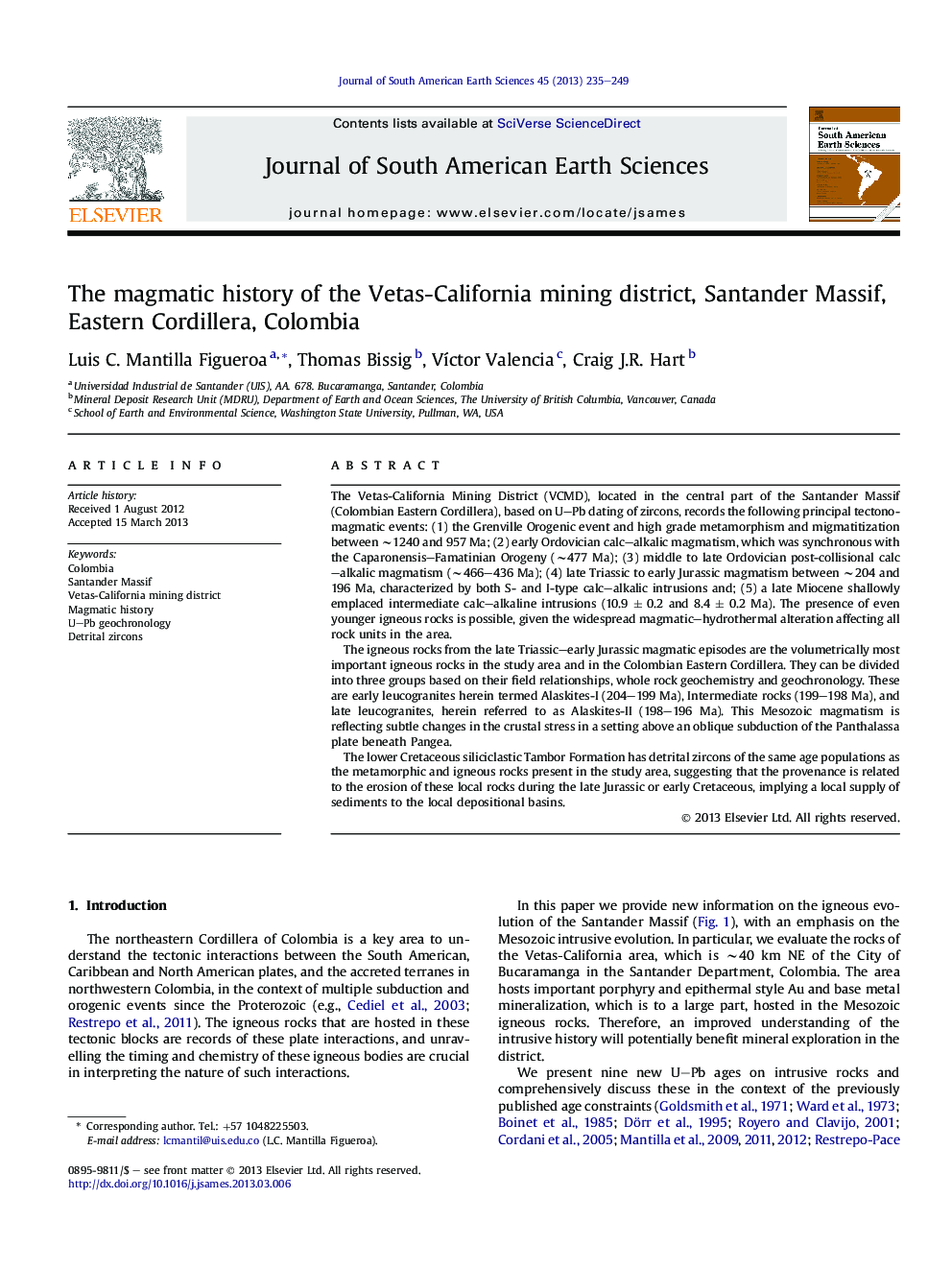| Article ID | Journal | Published Year | Pages | File Type |
|---|---|---|---|---|
| 4682345 | Journal of South American Earth Sciences | 2013 | 15 Pages |
•We studied the magmatic history of the Vetas-California mining district (Santander Massif, Eastern Cordillera, Colombia).•We present new U–Pb ages on intrusive Mesozoic rocks; and on detrital zircons.•The Mesozoic magmatism is related to an oblique subduction of the Panthalassa plate beneath Pangea.
The Vetas-California Mining District (VCMD), located in the central part of the Santander Massif (Colombian Eastern Cordillera), based on U–Pb dating of zircons, records the following principal tectono-magmatic events: (1) the Grenville Orogenic event and high grade metamorphism and migmatitization between ∼1240 and 957 Ma; (2) early Ordovician calc–alkalic magmatism, which was synchronous with the Caparonensis–Famatinian Orogeny (∼477 Ma); (3) middle to late Ordovician post-collisional calc–alkalic magmatism (∼466–436 Ma); (4) late Triassic to early Jurassic magmatism between ∼204 and 196 Ma, characterized by both S- and I-type calc–alkalic intrusions and; (5) a late Miocene shallowly emplaced intermediate calc–alkaline intrusions (10.9 ± 0.2 and 8.4 ± 0.2 Ma). The presence of even younger igneous rocks is possible, given the widespread magmatic–hydrothermal alteration affecting all rock units in the area.The igneous rocks from the late Triassic–early Jurassic magmatic episodes are the volumetrically most important igneous rocks in the study area and in the Colombian Eastern Cordillera. They can be divided into three groups based on their field relationships, whole rock geochemistry and geochronology. These are early leucogranites herein termed Alaskites-I (204–199 Ma), Intermediate rocks (199–198 Ma), and late leucogranites, herein referred to as Alaskites-II (198–196 Ma). This Mesozoic magmatism is reflecting subtle changes in the crustal stress in a setting above an oblique subduction of the Panthalassa plate beneath Pangea.The lower Cretaceous siliciclastic Tambor Formation has detrital zircons of the same age populations as the metamorphic and igneous rocks present in the study area, suggesting that the provenance is related to the erosion of these local rocks during the late Jurassic or early Cretaceous, implying a local supply of sediments to the local depositional basins.
